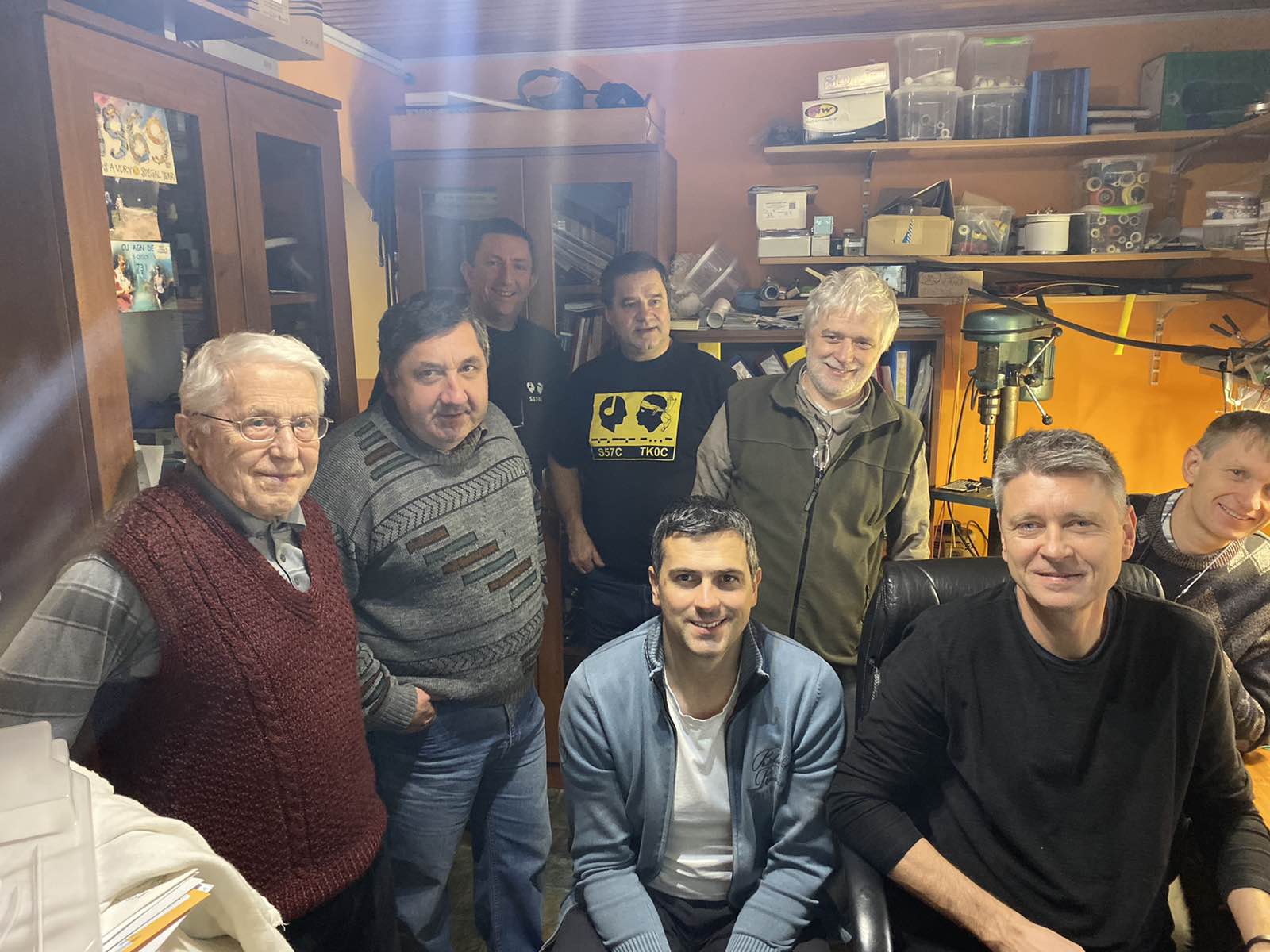
There has been a lot of confusion about TX noise performance of
modern HF transcievers after ARRL changed the way how they measure TX
composite noise. Recent plots only show TX phase noise performance.
Although one can design TX chain where LO phase noise is the main
contributor to the composite TX noise (the optimal design), most, if
not all, amateur HF transcievers do not fall in this category. In
most cases the amplitude noise, coming from various sources, is the
main contributor to the TX noise actually transmitted through antenna.
Measuring TX phase noise, where the test method removes amplitude
noise, does not give the right picture for nowadays very important HF
transciever metric - how clean is the TX signal.
When choosing new transciever, many are still distracted by the RX
performance ranking tables, where the RIG with higher rank is percieved
as being better - which relly is missleading as the differences might
only be a dB or so on the performance metric that is hard to repeatably
measure with 1dB accuracy. It is time to get out of the RX performance woods and
present full picture of the HF RIGs. Kudos to ARRL and other
independent reviewers for publishing complete test data.

Group photo (from left to right: 1rm, 7naw, 7al, 7c, 3mm, 3rm, 3ww, 0k).
I used QS1R as a measurement receiver with 14.313 kHz crystal notch filter (tnx to Franci/s51rm) and 100W attenuator set to optimize measurement dynamic range. Afterwards I saw that QS1R dynamic range would be OK to accurately measure composite TX noise of all RIGs we had on the table except for the K3, SunSDR and KX3.
For reference, here is the QS1r phase noise: -139dBc/Hz@1kHz, -146dBc/Hz@10kHz,
-148dBc/Hz@20kHz, -149dBc/Hz@50kHz. With XTAL notch filter the
measurements were done 30 dB above the QS1r noise floor.
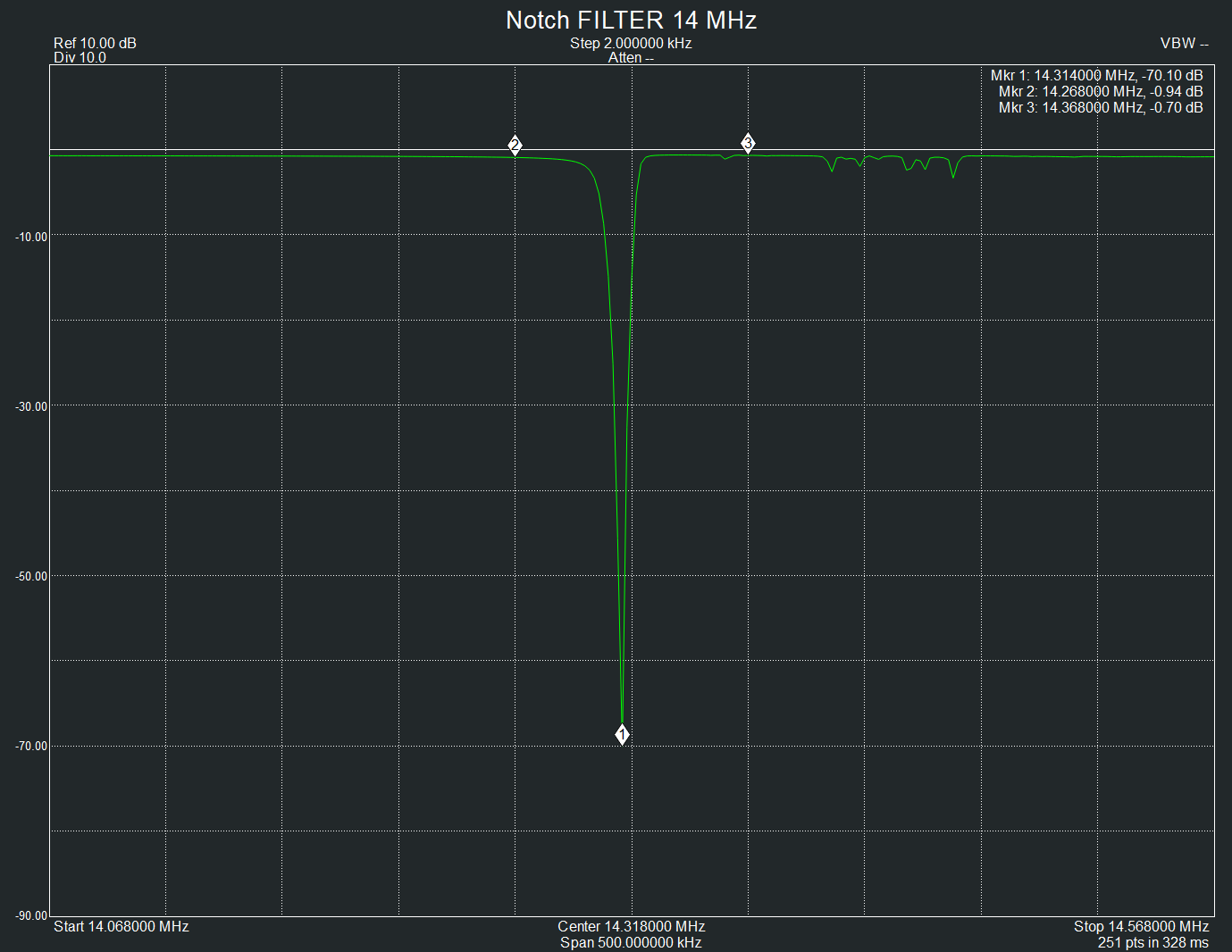
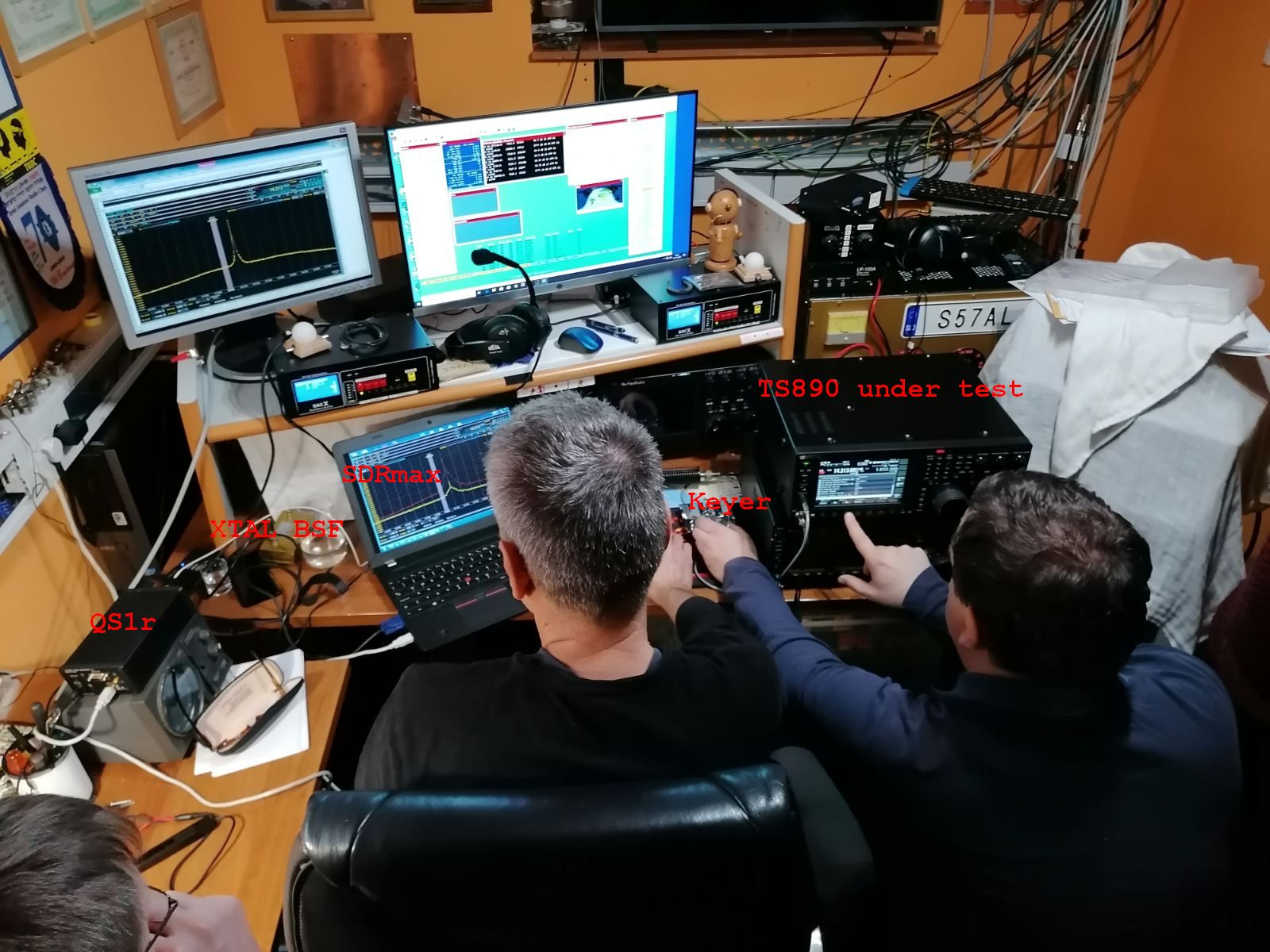
| TS590sg |
|
| TS590s - 2pcs |
|
| TS890 - 2pcs |
|
| FTdx101D | |
| FLEX6600 | |
| FT1000mp | |
| FT2000 - 2pcs |
|
| FLEX1500 | |
| IC7600 | |
| IC7610 | |
| IC7300 | |
| K3 | |
| KX3 | |
| SUNSDR |
I set for 3 different TX tests:
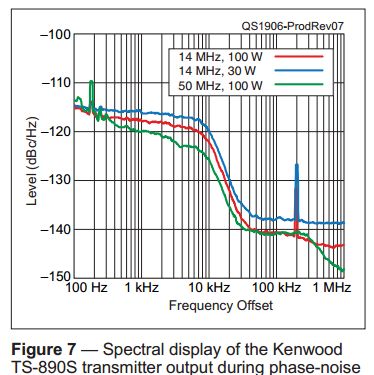

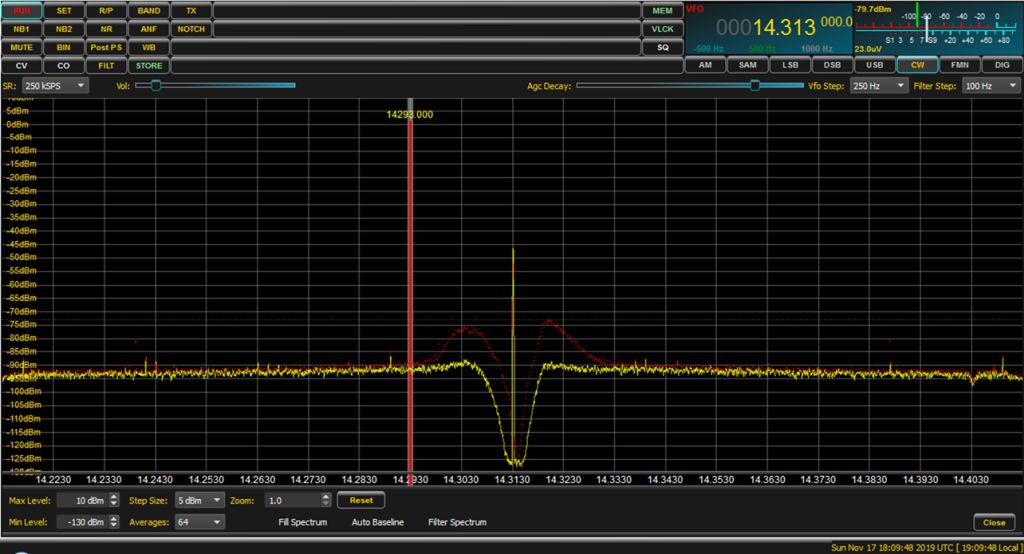
| RX BDR @20 kHz & NF | dBc/Hz @ offset (kHz) | |||||||||
| RIG | NF (dB) | BDR (dB) | Pout (W) | 10 | 15 | 20 | 25 | 50 | 100 | 500 |
| TS590sg | 18 | 139 | 100 | -118 | -127 | -132 | -134 | -137 | -138 | |
| 50 | -117 | -126 | -131 | -133 | -135 | -136 | -137 | |||
| 10 | -115 | -124 | -129 | -129 | -130 | -131 | ||||
| TS590s | 16 | >140 | 100 | -118 | -127 | -131 | -132 | -134 | -135 | |
| 50 | -119 | -130 | -132 | -133 | -135 | -136 | -140 | |||
| 10 | -119 | -128 | -130 | -131 | -133 | -134 | ||||
| TS890 | 16 | >140 | 100 | -116 | -123 | -126 | -130 | -135 | -137 | |
| 50 | -113 | -118 | -123 | -126 | -131 | -133 | -133 | |||
| 10 | -107 | -112 | -117 | -120 | -125 | -127 | ||||
| FTdx101D | 22 | >140 | 100 | -133 | -135 | -136 | -137 | -138 | -139 | |
| 50 | -130 | -132 | -133 | -134 | -135 | -136 | -144 | |||
| 10 | -128 | -130 | -131 | -131 | -133 | -134 | ||||
| FLEX6600 | 21 | 117 | 100 | -117 | -119 | -122 | -125 | -134 | -140 | |
| 50 | -114 | -116 | -119 | -121 | -131 | -136 | -142 | |||
| 10 | -108 | -111 | -113 | -115 | -122 | -126 | ||||
| FT1000mp | 19 | >140 | 100 | -122 | -126 | -128 | -129 | -130 | -132 | |
| 50 | -121 | -125 | -126 | -127 | -127 | -128 | -133 | |||
| 10 | -116 | -119 | -119 | -119 | -119 | -119 | ||||
| FT2000 | 19 | 126 | 100 | -116 | -123 | -126 | -127 | -129 | -129 | |
| 50 | -114 | -121 | -124 | -125 | -126 | -127 | -124 | |||
| 10 | -111 | -120 | -121 | -121 | -122 | -122 | ||||
| FLEX1500 | 21 | 107 | 5 | -115 | -117 | -118 | -119 | -123 | -119 | -111 |
| IC7600 | 16 | 122 | 100 | -121 | -125 | -129 | -131 | -137 | -141 | |
| 50 | -118 | -124 | -128 | -130 | -134 | -137 | -137 | |||
| 10 | -121 | -124 | -126 | -126 | -126 | -127 | ||||
| IC7610 | 17 | 120 | 100 | -128 | -130 | -132 | -134 | -137 | -140 | |
| 50 | -121 | -123 | -125 | -126 | -130 | -137 | -137 | |||
| 10 | -115 | -116 | -118 | -119 | -121 | -123 | ||||
| IC7300 | 50 | -111 | -111 | -111 | -113 | -121 | -117 | |||
| K3 | 12 | >140 | 100 | -132 | -137 | -139 | -141 | -144 | -148 | |
| 50 | -132 | -135 | -137 | -139 | -140 | -142 | -141 | |||
| 10 | -133 | -137 | -140 | -142 | -145 | -147 | ||||
| KX3 | 22 | >135 | 15 | -138,8 | -140,8 | -140,8 | -140,8 | -142,8 | -144,8 | -142,8 |
| SUNSDR | 24 | 129 | 15 | 15 | 15 | 15 | 15 | 15 | 15 | 15 |
| FTdx10 (2024) | 21 | >140 | 100 | -137 | -137 | -137 | -137 | -138 | -140 | |
| 50 | -125 | -125 | -126 | -126 | -128 | -129 | -138 | |||
| 10 | -121 | -121 | -122 | -122 | -124 | -126 | ||||
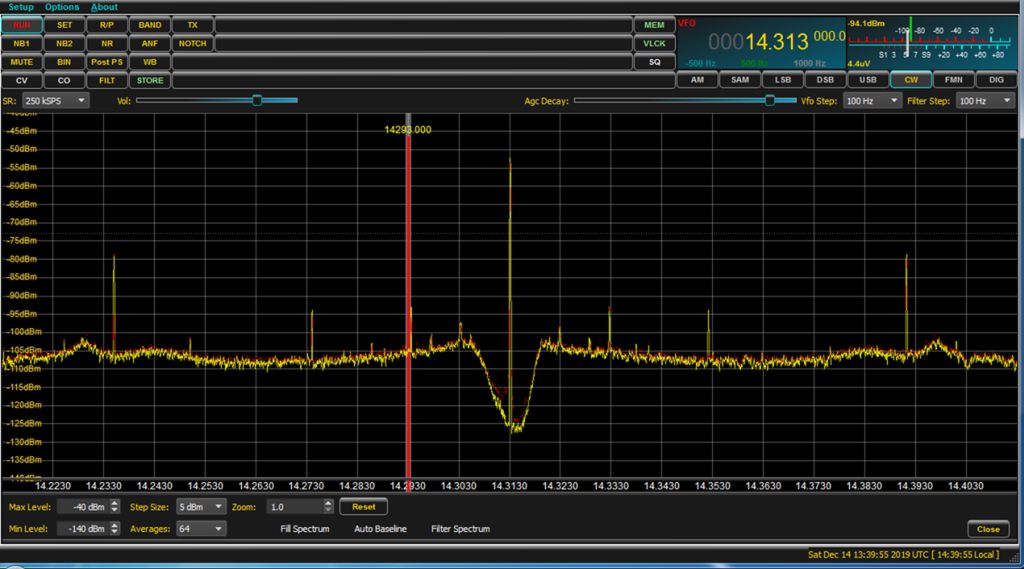
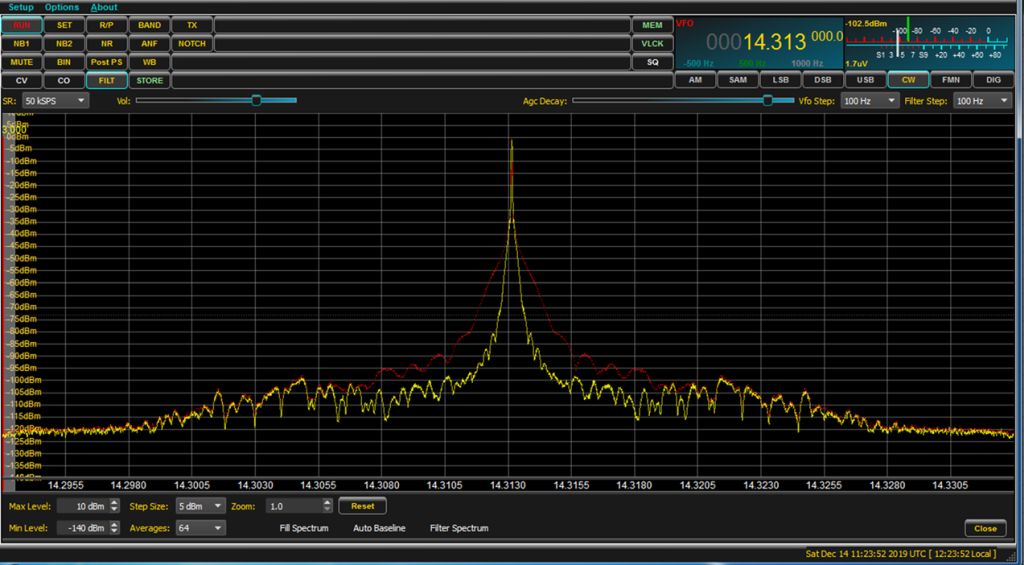
| RX BDR @20 kHz & NF | dBc in 500Hz @ offset (Hz) | ||||||||
| RIG | NF (dB) | BDR (dB) | Pout (W) | 600 | 1250 | 2500 | 5000 | 10000 | 20000 |
| TS590sg | 18 | 139 | 50 | -59 | -74 | -80 | -85 | -91 | -104 |
| TS890 | 16 | >140 | 50 | -64 | -76 | -79 | -79 | -86 | -94 |
| FTdx101D | 22 | >140 | 50 | -64 | -79 | -84 | -89 | -89 | -104 |
| FLEX6600 | 21 | 117 | 50 | -57 | -67 | -74 | -81 | -87 | -94 |
| FT1000mp | 19 | >140 | 50 | -34 | -49 | -61 | -74 | -86 | -96 |
| FT2000 | 19 | 126 | 50 | -44 | -57 | -69 | -69 | -81 | -94 |
| IC7600 | 16 | 122 | 50 | -54 | -64 | -74 | -86 | -94 | -99 |
| IC7610 | 17 | 120 | 50 | -54 | -64 | -74 | -86 | -89 | -91 |
| K3 | 12 | >140 | 50 | -64 | -79 | -94 | -99 | -104 | -107 |
| KX3 | 22 | >135 | 15 | -59 | -74 | -86 | -104 | -104 | -104 |
| SUNSDR | 24 | 129 | 15 | -64 | -84 | -94 | -101 | -109 | -109 |
| FTdx10 (2024) | 21 | >140 | 50 | -74 | -84 | -91 | -96 | -97 | -98 |
| 50 | -74 | -84 | -94 | -101 | -104 | -106 | |||
| RX BDR @20 kHz & NF | dBc in 2500Hz @ offset (kHz) | ||||||||
| RIG | NF (dB) | BDR (dB) | Pout (W) | 2,5 | 5 | 7,5 | 10 | 15 | 20 |
| TS590sg | 18 | 139 | 50 | -35 | -55 | -62 | -65 | -68 | -73 |
| TS890 | 16 | >140 | 50 | -35 | -50 | -60 | -65 | -66 | -70 |
| FTdx101D | 22 | >140 | 50 | -30 | -55 | -65 | -77 | -90 | -95 |
| FLEX6600 | 21 | 117 | 50 | -40 | -57 | -70 | -77 | -87 | -95 |
| FT1000mp | 19 | >140 | 50 | -40 | -50 | -60 | -65 | -80 | -83 |
| FT2000 | 19 | 126 | 50 | -30 | -50 | -60 | -65 | -70 | -60 |
| IC7600 | 16 | 122 | 50 | -40 | -70 | -75 | -75 | -85 | -90 |
| IC7610 | 17 | 120 | 50 | -25 | -45 | -60 | -63 | -65 | -70 |
| K3 | 12 | >140 | 50 | -35 | -50 | -57 | -65 | -80 | -90 |
| KX3 | 22 | >135 | 15 | -15 | -35 | -50 | -60 | -75 | -85 |
| SUNSDR | 24 | 129 | 15 | -30 | -60 | -75 | -85 | -90 | -90 |
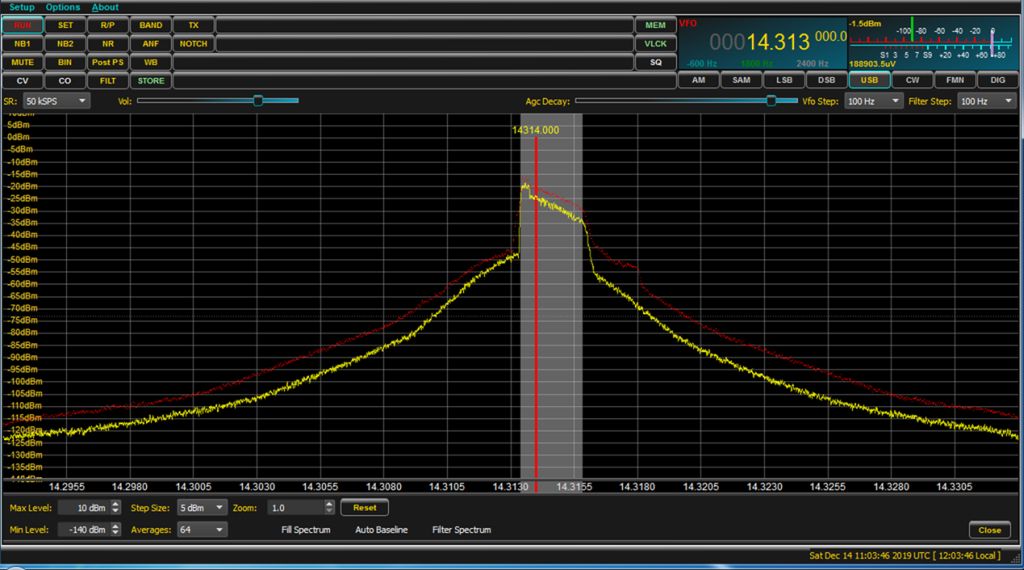

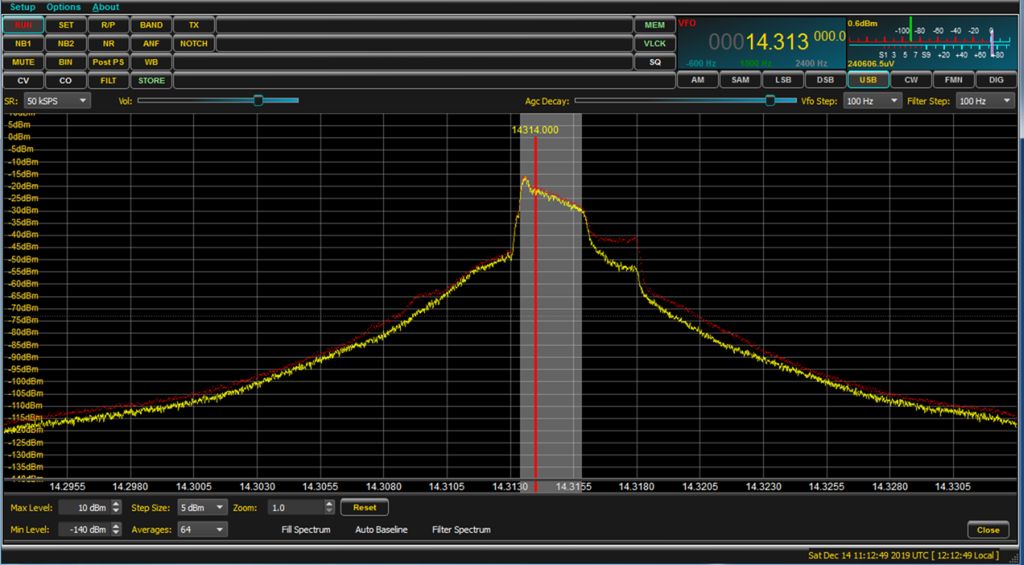
The
test campaign was really succesful - cool social gathering in pre-Covid
era, fine wine and beer, few plays of billiard afterwards, and yes, we
learned some new stuff and refreshed what we already knew.
It is surprising to me that after so many fine articles on the
importance of the low TX noise and distortion levels, even in 2020 the best radios
from the "big three" suppliers still lag big time behing K3, not to mention K3S.
Nevertheless, never buy a radio by consulting ranking tables - first
decide what your needs are and then go for best price-performance radio
shopping.
We started to replace TS590 with FTdx10 in TK0C RUN/INB
setup and were believing the RX and TX performance would be equal to
the FTdx101. Live tests on the band did not show any major
difference to TS590 apart from the close-in noise bump on TS590 (see
above). Finally I decided to test how it really performs and I was
unpleasently surprised after seeing TX noise and keying clicks results
@50W. Radio performs extremely well @100W (very close to K3), but looks
likeYEASU screwed something in the ALC design. Figure below shows
the difference in TX noise between 100W(yellow) and 50W(red). There is
almost 12dB worse TX noise at 50W - so be careful if you are using
FTdx10 in your RUN/INB setups (careful = get 100W 3dB attenuator
somewhere).
Keying clicks plot shows some harmonic noise bumps @100W - probably the same ALC ...